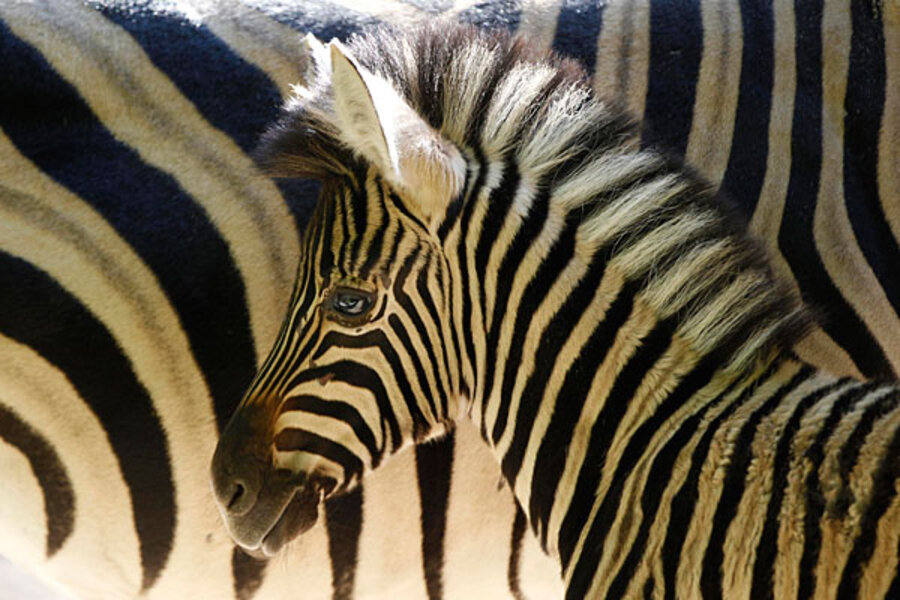Scientists unravel mystery of zebra stripes
Loading...
Where did zebras get their stripes? It's a question nearly as old as the one about the chicken and the egg.
According to new research published in the Journal of Experimental Biology, zebras' stripes could have evolved as an adaptation to avoid getting bitten by flies.
Other ideas of the stripes' origins abound. Some have posited that the pattern helped to protect zebras from predators such as lions or hyenas. Others suggest that through "dazzle camouflage" the zebras' stripes help to distort a predator's perception of their speed. Dazzle camouflage has even been adopted for military uses; many British battleships in World War I were painted to look like zebras. Another theory is that zebras' distinctive markings may help the animals tell each other apart.
The idea that zebras' stripes are a form of physical insect repellant has actually been around since the 1980s. An earlier study looked at the deterrent effects of stripes on tsetse flies, while this new study looks at stripes' effect on horseflies.
To test this hypothesis, scientists in Budapest visited a horse farm and tested varying black-and-white striped patterns on inanimate objects for their attractiveness to horseflies. Using oil and glue, they trapped the insects, finding that the narrowest stripes attracted the fewest flies. Then, the scientists compared the striped model to solid-colored models. They expected the striped model to attract an intermediate number of insects, knowing that dark colors are more attractive to horseflies than white ones. But they found that the striped horse outstripped them all.
Dark colors attract the insects because they reflect light in the same way that water does, causing the light waves to become horizontally polarized. Light reflected from white pigment tends to be unpolarized, making it less appealing to the bugs. In the striping on a zebra's coat, the polarized and unpolarized light may be confusing to insects, causing them to leave zebras alone.
According to the study, the animals' attractiveness to insects diminishes with the size of the stripes. The narrow width of zebras' stripes, concluded the scientists, apparently makes the animals less appetizing to biting flies.
Some questions remain. These tests were conducted on inanimate objects; live zebras may produce odors that attract insects, diminishing any protective effect of the stripes. Also, it's unclear why other species haven't adopted this portable insect repellent. The scientists' recent findings may be just one piece of the answer to this age-old question.





